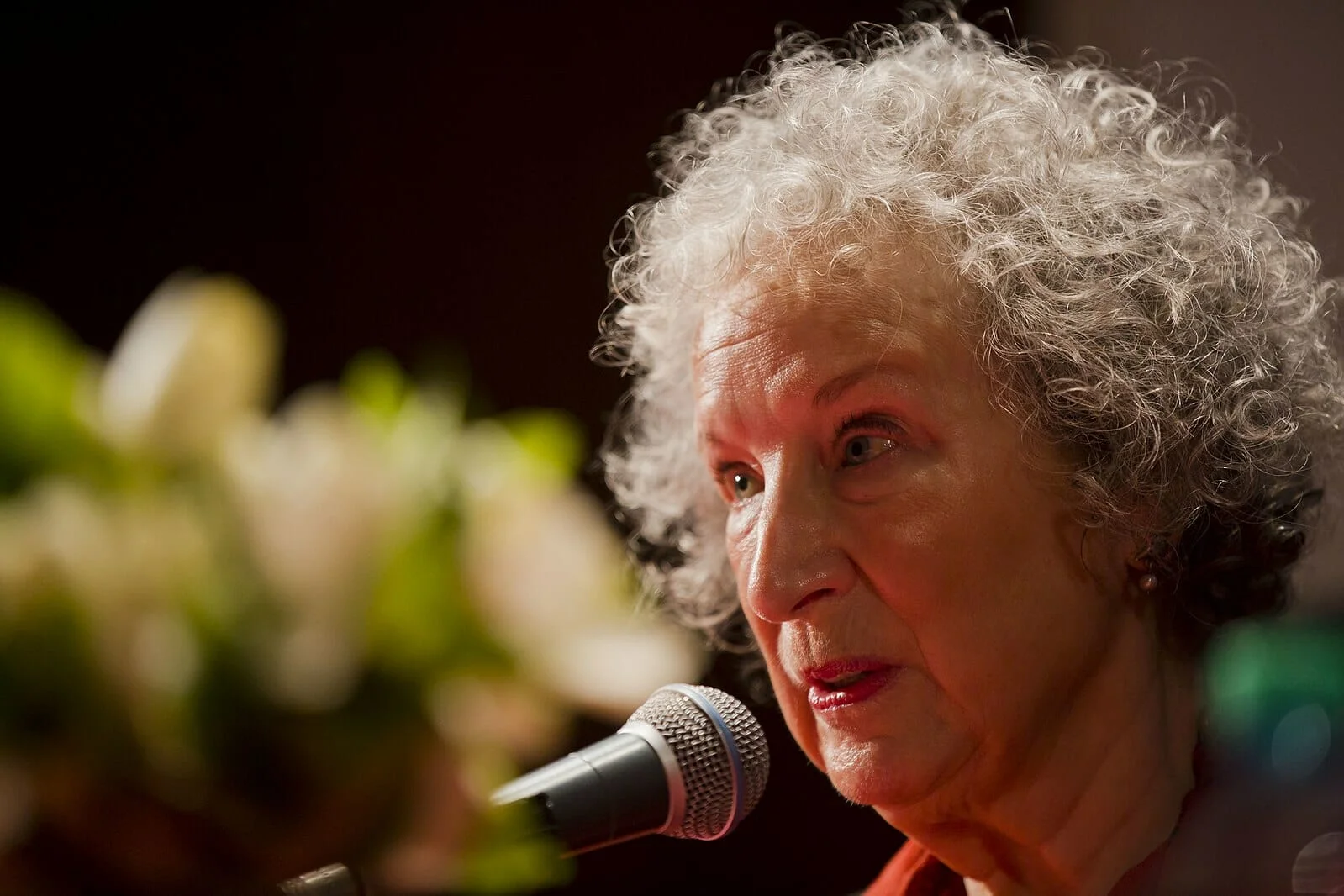
On October 3rd, 2021, the Turin International Book Fair gave the public a little taste of the festival that was about to come: as a preview for the many guests that were to appear, it welcomed three international writers: Maylis de Kerangal, Kader Abdolah, and Margaret Atwood, and it was the latter whose meeting opened the event.
Atwood is a Canadian poet and novelist, having published more than 40 books. She is also known for her literary criticism work and activism on environmentalist and feminist issues. Her most famous novel is The Handmaid’s Tale, from which the showrunner Bruce Miller adapted a successful series for Hulu. At the fair preview, she presented her latest books: Dearly, a poetry collection, and Tric Trac Trio, a children’s book. She was already in Italy to receive the Lattes Grinzane 2021 prize. Her interviewer was Loredana Lipperini: a writer, journalist, and radio broadcaster for the program Fahrenheit.
Where Atwood’s passion for writing started
As the interview started, Lipperini asked Atwood about her beginnings as a writer. The author talked about how she wrote her first short novel when she was 7 years old. She then abandoned writing in favor of painting, only to start writing again at 16 years old because “it was more fun”.
Back then, according to Atwood, writing in Canada was somewhat of an individual thing to do. It was hard to get published and poets all knew each other, communicating through letters and organizing public readings in coffee houses. Her readings were mostly in The Bohemian Embassy, an abandoned warehouse that some people actually thought was a real embassy.
At 19 years old she published her first collection of poetry: Double Persephone, seven poems, at sixteen pages for 70 cents. She drew her own cover to cut down on costs. Plus, the printing machine had a shortage of the letter “a”, so several pages had to be printed more than once. The theme was the underworld, as there was a general love for mythology back then. However, the love for mythology never left Atwood, as readers can see in her book The Penelopiad. In this novella, the twelve handmaids that were murdered by Odysseus on his return see justice as they become the chorus of their own tragedy.
An old image of the Bohemian Embassy in Toronto, courtesy of Behind the Bohemian Embassy, Moose Creek Productions Inc.
Connecting the past with the present…
When The Handmaid’s Tale came out, Ronald Reagan was the President of the United States. In 2017, when the series came out, the President was Donald Trump. Atwood sees a pattern in this, and she demonstrates her theory by dwelling on the past.
In 1970 women were facing substantial changes in their social and professional circumstances – of course, these were changes for which they were responsible, as they finally had the voice to ask for them. However, just ten years later these changes face a step back. When she wrote the novel, it was because she believed that “anything can happen anywhere depending on the circumstances”. During the interview, she directly spoke to the people who tell her that the dystopian future she imagined could never happen there, in the United States. The question, she said, is not whether it would happen. It is rather: how it would happen? According to her, it would involve a white supremacist, theologist, and puritanical kind of tyranny. Think about the invasion of the White House in 2020, Atwood said: what flag did they bear?
She then mentioned a quote from The Leopard, the classic novel by Giuseppe Tomasi di Lampedusa. “For everything to stay the same, everything has to change.”
…and the present with the future
Moving into the present, Atwood mentions that we are living in a very difficult period, historically speaking. Chaos brings fear, which in turn leads to anger. But she encourages the audience to consider the four most urgent points. The climate crisis, the economic equality crisis that follows the climate crisis, the fundamental role of women in both these factors, and the indigenous people living on the land, who more than anyone else can give advice and direction with environmental issues.
Speaking about the future, Atwood mentions one manuscript she entrusted to the Library of Oslo that should be opened in a thousand years’ time. The questions for the future are many: how to reduce the carbon footprint without endangering the whole of humanity? How do we transition to that?
Margaret Atwood gives no advice, but leaves the audience with just one sentence: “Good luck, human race!“


